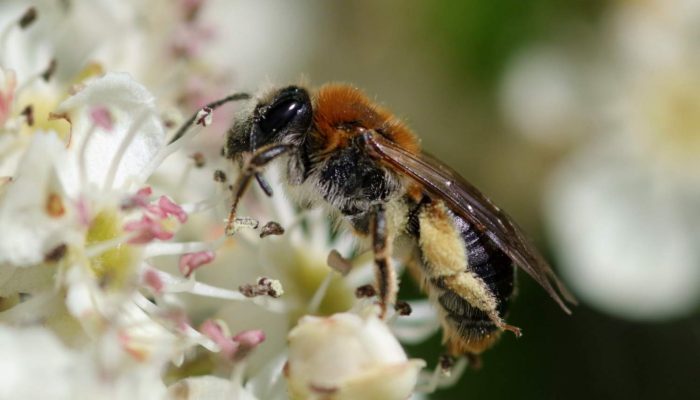The last few weeks have been particularly good for bees with lots of warm and sunny weather. As most of us are spending a lot of time at home it is a good opportunity to take a look at some of the commoner species you are likely to encounter in and around the garden or in your locality during April, May and June.
Firstly how many different bees might you see in an average garden? Well the current record is for a garden in Surrey where the owner (a bee specialist) has, at last count, found 133 species! Whilst you might not reach these heady heights, many gardens could see 40 or 50 species over a number of years.
A study of a garden in Leicester (Jennifer Owen, 2010) found 59 species between 1975 and 2001 and in my own garden I’ve seen around 45 species since 2010 and 30 just this year (a result of spending more time in the garden no doubt).
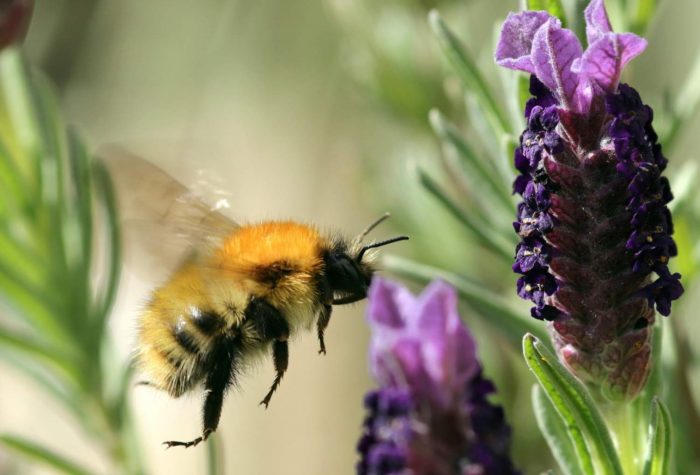
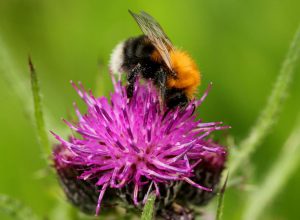
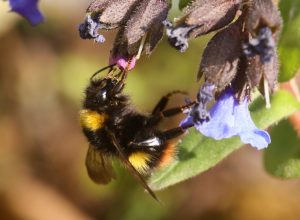
Bumblebees are a good place to start and at the moment the queens of many species are actively searching for suitable nest sites and starting to provision nests and produce worker bees.
The queens of two of the best known species, the Buff-tailed Bumblebee Bombus terrestris and the Common Carder Bee Bombus pascuorum, are both very active at the moment.
The smaller Early Bumblebee Bombus pratorum is slightly ahead and some workers have been out foraging in the last few days.
The large Garden Bumblebee Bombus hortorum is also often seen in gardens as is the White-tailed Bumblebee Bombus lucorum agg..
If you live close to hedgerows or woodlands you may be starting to see the Red-tailed Bumblebee Bombus lapidarius, which tends to emerge a little later.
Another bumblebee that is now well established in garden environments is the Tree Bumblebee Bombus hypnorum. It is a newcomer to the British bumblebee fauna and can often be found nesting in bird boxes.
Another relatively widespread bumblebee that can occur in gardens is the Vestal Cuckoo-bee Bombus vestalis. This species takes over the nests of the Buff-tailed Bumblebee and uses the workers in the conquered colony to raise its own females and males (cuckoo bees don’t produce their own workers). Other cuckoo bumblebee species may also be seen in gardens, but can be difficult to identify.
There are also lots of smaller bees that have recently emerged and are now flying around gardens feeding on nectar and looking for a mate and suitable nest sites.
This includes many mining bees that can do very well in gardens in spring. Noticeable species are the striking Tawny Mining Bee Andrena fulva, the elegant Ashy Mining Bee Andrena cineraria and the honeybee sized Orange-tailed Mining Bee Andrena haemorrhoa.
Those requiring a little more practice at identification include the Grey-patched Mining Bee Andrena nitida, Chocolate Mining Bee Andrena scotica and Buffish Mining Bee Andrena nigroaenea.
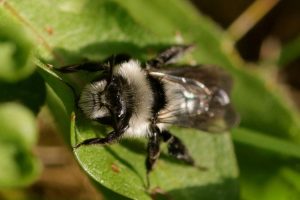
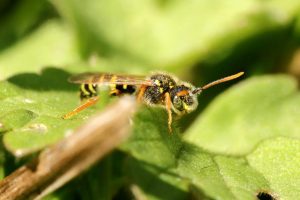
Mining bees are ground-nesting and most prefer lighter soils rather than harder clay soils. As with bumblebees, mining bees have their own specific cleptoparasites (species that lay eggs in the bee’s nest so that their larvae can destroy the bee larvae and eat the stored food).
Many of these are called Nomad bees which can be brightly coloured and look like small wasps. They can often be found flying over patches of ground where the bees are excavating new nest sites. Gooden’s Nomad Bee Nomada goodeniana is one of the easier species in this group (34 species are known from Britain) to identify and seems to be very widespread.
Another bee that is often seen in gardens is the Red Mason Bee Osmia bicornis. These bees can be seen around walls of buildings and like to nest in soft mortar but will also enthusiastically use bee nest boxes. Males are quite a bit smaller than the females.
Another group of mining bee parasites are the bee flies. Bee-flies look like bees in so far as they are quite furry and orange to pale brown in colour, but they only have one pair of wings and short antennae and are (as the name suggests) flies (Diptera). These last few weeks there have seen a peak in activity of the Dark-edged Bee-fly Bombylius major, which parasitizes the nests of a number of species of mining bee.
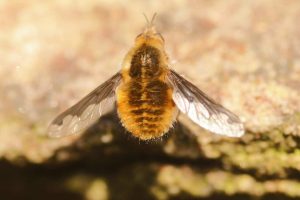
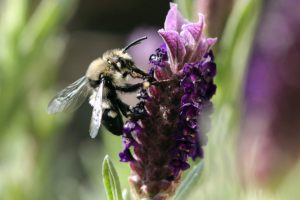
The Hairy-footed Flower Bee Anthophora plumipes is also a common garden species (and the subject of an earlier blog). Tawny-coloured males usually appear first in mid to late March (at least in the East Midlands) followed a week or so later by the jet black females. They have a strong preference for tubular flowers like lungwort, gromwell and cowslips, but also use labiates and lavenders.
Hairy-footed Flower Bees also have their associated cleptoparasites and one of these, the Mourning Bee Melecta albifrons seems to be expanding its range, certainly in the north Midlands. This is a handsome bee with silvery grey hairs on the face, head and thorax and distinct grey/white patches on the abdomen.
Kieron is Hymenoptera recorder for Derbyshire and has suggested some useful reading on bees:
- Steven Falk (2015) Field Guide to the Bees of Great Britain and Ireland. Bloomsbury Publishing.
- Jennifer Owen (2010) Wildlife of a Garden. A Thirty-year Study. Royal Horticultural Society.
- Mike Edwards and Martin Jenner (2009) Field Guide to the Bumblebees of Great Britain and Ireland. Countryside and Garden Conservation Series. Ocelli.
